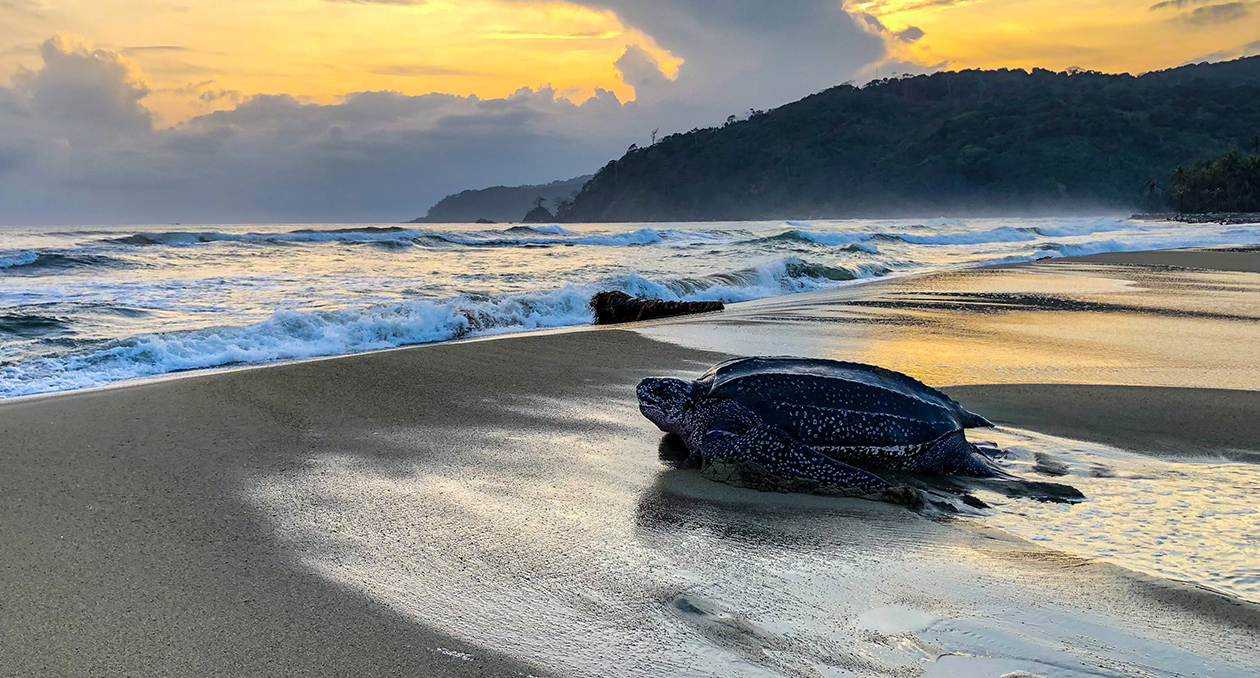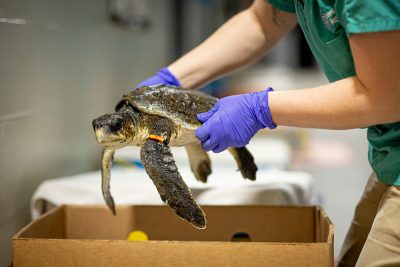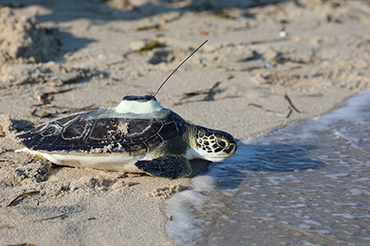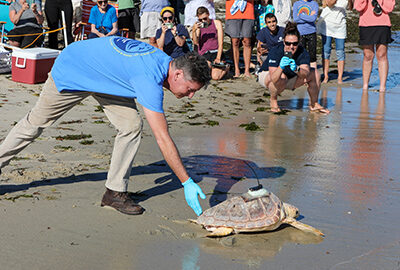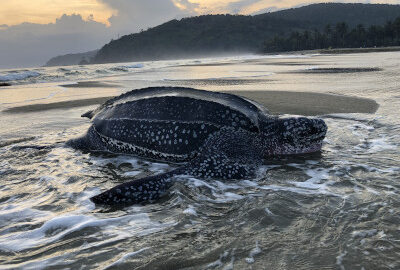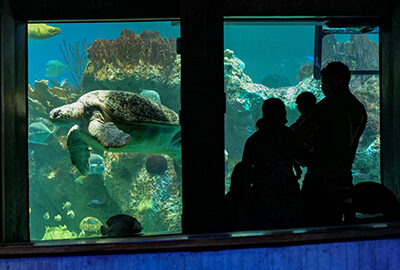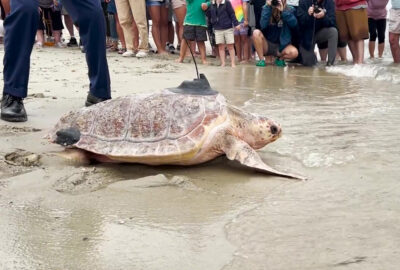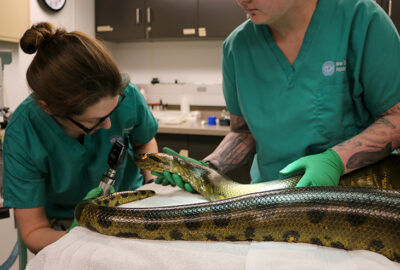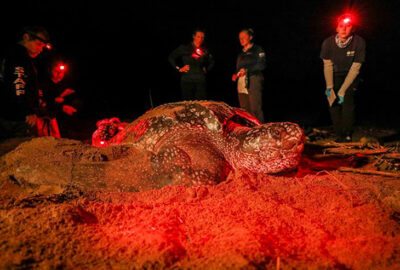Construction Update: As we enhance the look and feel of the Aquarium and make structural improvements to the penguin exhibit, some exhibits are temporarily closed, and the penguins are off exhibit until February 13. Learn more.
Today, most populations of sea turtles are considered vulnerable, endangered, or critically endangered, and they face an uncertain future. We rehabilitate hundreds of injured turtles each year, and our scientists conduct innovative research to improve sea turtle welfare, conservation, and protection.
Turtle Facts
Size
Ranges from the diminutive Kemp’s ridley at ~2 feet and 100 pounds to the enormous leatherback that can exceed 7 feet and 1,500 pounds
Diet
Varies by species, from jellies and crabs to seagrass and algae
Lifespan
Estimated to be 50-100 years, depending on species
Range
Global, except for the polar regions
Threats to Survival
- Bycatch
- Habitat loss
- Climate change
Our Work to Protect Sea Turtles
Sea Turtle Rescue, Rehabilitation, and Research
In the past decade, the New England Aquarium has rescued, rehabilitated, and released thousands of endangered and threatened sea turtles. Through this work, we have made advances in veterinary medicine and rehabilitation practices, and have used tagging to monitor the movement of released turtles to learn about survival rates, behavior, and habitat use.
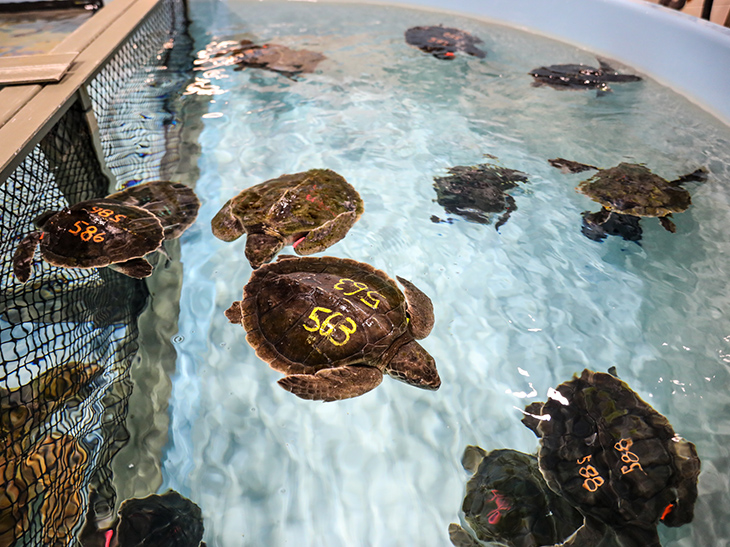
Scientists Pioneer Tracking Procedure for Sea Turtles
Surgically implanted acoustic tags allow scientists to monitor rehabilitated turtles for up to 10 years. By increasing our understanding of turtle migration patterns, behavior, and habitat use, we can help inform policies that better protect these animals.
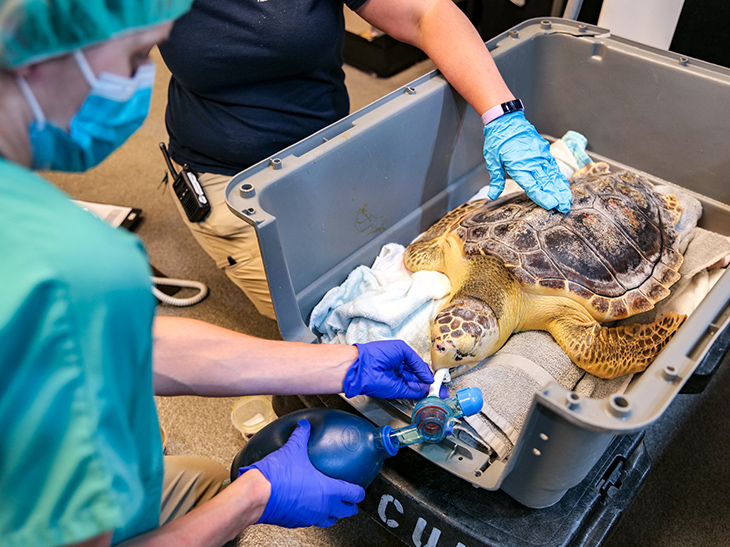
Health Assessment & Post-Release Monitoring of Entangled Leatherbacks
The world’s largest turtle species, the leatherback, are threatened by boat strikes and entanglement in fishing gear. This project seeks to understand the impacts of such human interactions in order to develop methods to mitigate them. We thank the Massachusetts Environmental Trust for supporting this work.
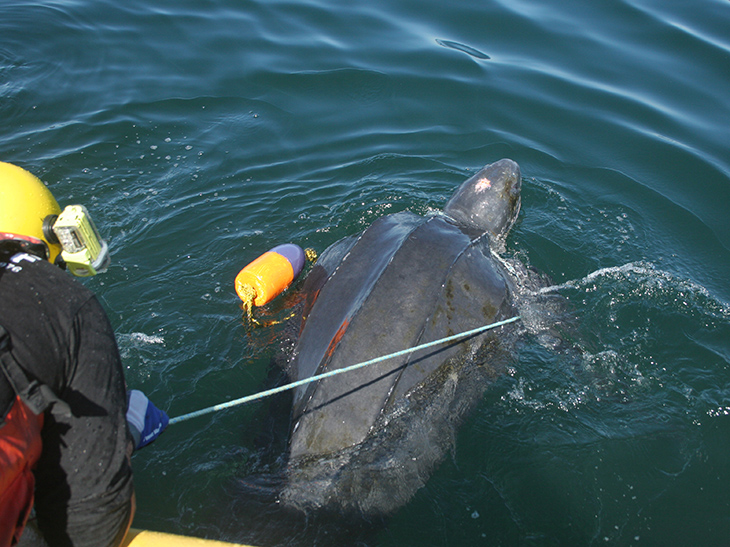
Sea Turtle Saved After Ingesting Stringed Balloon
We often provide specialized care to turtles like this cold-stunned Kemp’s ridley turtle who was discovered with a balloon ribbon running through its body. The small turtle was admitted to our Sea Turtle Hospital, where it was stabilized and underwent surgery to remove the ribbon, which turned out to be 92-inches long.
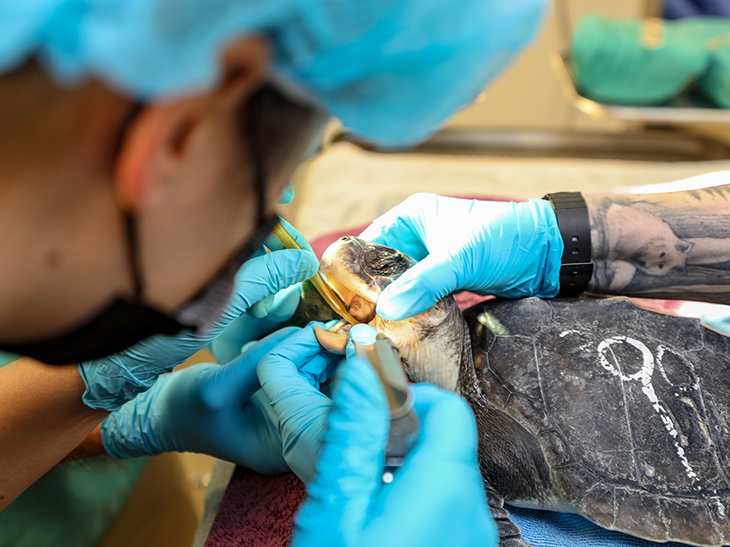
Supporting Locally-Led Action Worldwide
The Aquarium's Marine Conservation Action Fund provides support for community-based projects spearheaded by local conservation leaders in low- and middle-income countries around the globe. The program has funded 57 turtle conservation projects across 31 countries since 1999.
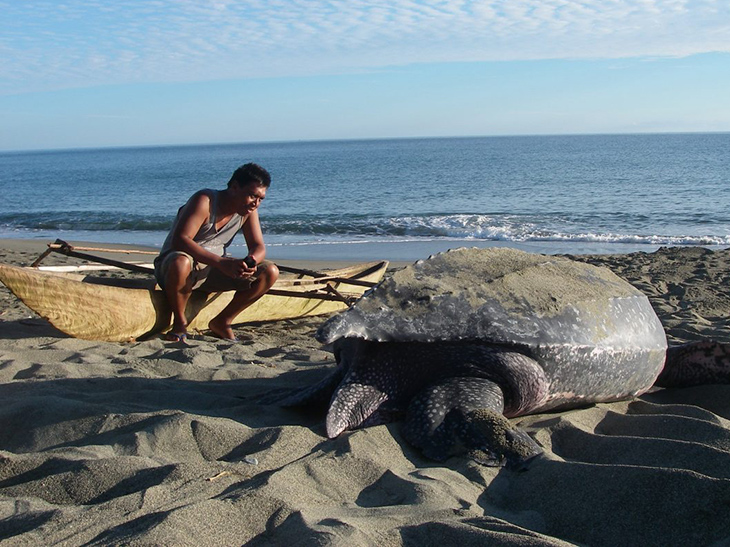
Ask the Expert
Learn more about the critically endangered Kemp's ridley turtle with Rescue and Rehabilitation Manager Adam.
What are Kemp's ridley turtles?
00:24Where can Kemp's ridley turtles be found?
00:37What challenges do Kemp's ridley turtles face?
00:21How does the Aquarium help Kemp's ridley turtles?
00:22




A Head Start for Freshwater Turtles
Every year, in partnership with Zoo New England, the Aquarium cares for freshwater turtles in the Head Start Turtle Program. At the Aquarium, the turtles are kept out of their usual winter hibernation to eat more and grow! The goal is to get them strong and healthy for a summer release, which gives them a better chance for survival in the wild.
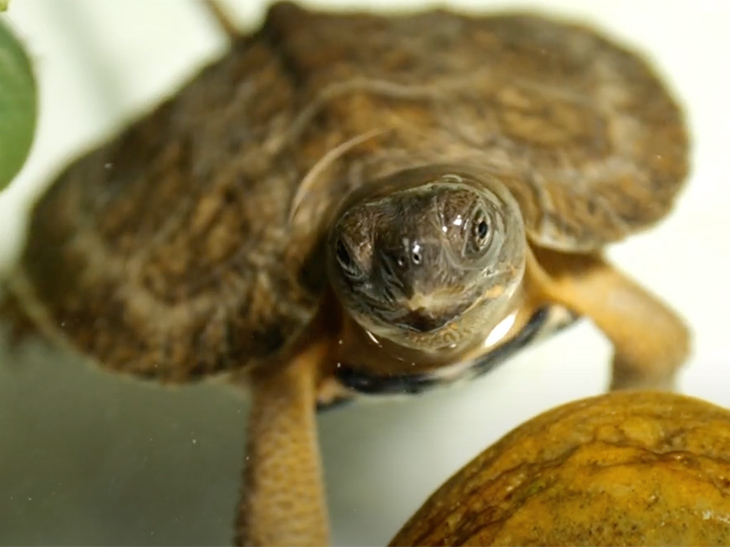
Sea Turtle Stories

